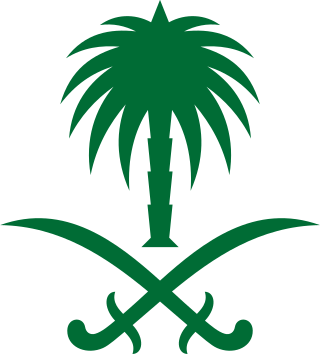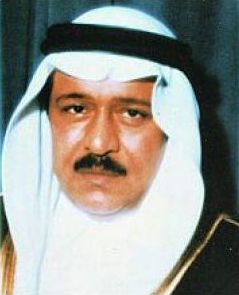
The House of Saud is the ruling royal family of Saudi Arabia. It is composed of the descendants of Muhammad bin Saud, founder of the Emirate of Diriyah, known as the First Saudi state (1727–1818), and his brothers, though the ruling faction of the family is primarily led by the descendants of Abdulaziz bin Abdul Rahman, the modern founder of Saudi Arabia. It forms a subtribe of the larger prominent ancient Banu Hanifa tribe of Arabia, from which well known 7th century Arabian theologist Maslama ibn Ḥabīb originates. The most influential position of the royal family is the King of Saudi Arabia, an absolute monarch. The family in total is estimated to comprise 15,000 members; however, the majority of power, influence and wealth is possessed by a group of about 2,000 of them. Some estimates of the royal family's wealth measure their net worth at $1.4 trillion.This figure includes the market capitalization of Saudi Aramco, the state oil and gas company, and its vast assets in fossil fuel reserves, making them the wealthiest family in the world and the wealthiest in recorded history.
Saud bin Abdulaziz Al Saud ruled the First Saudi State from 1803 to 1814. Saud annexed Mecca and Medina from the Ottoman Empire making him the first Al Saud ruler who received the title of the servant of the Two Holy Cities. During his rule the state experienced a significant level of strength and expansion for which he was called Saud Al Kabeer or Saud the Great.
Faisal bin Turki Al Saud was the second ruler of the Second Saudi State and seventh head of the House of Saud.

The Emirate of Nejd or Imamate of Nejd was the Second Saudi State, existing between 1824 and 1891 in Nejd, the regions of Riyadh and Ha'il of what is now Saudi Arabia. Saudi rule was restored to central and eastern Arabia after the Emirate of Diriyah, the First Saudi State, having previously been brought down by the Ottoman Empire's Egypt Eyalet in the Ottoman–Wahhabi War (1811–1818).

Turki bin Abdullah Al Saud was the founder of the Second Saudi State and ruled Najd from 1823–1834 following administration by the Ottoman Empire.
Saud bin Abdul Muhsin Al Saud is a Saudi royal, diplomat, and former politician. He served as the governor of Ha'il Province between 1999 and April 2017. In March 2021 he was appointed Saudi ambassador to Portugal.
Nayef is both a given name and a surname. Notable people with the name include:
Muqrin is an Arabic name. People with the name include:
Turki is a given name and surname, for more etymology, see Turki (disambiguation).

The Allegiance Council, also known as the Allegiance Commission or Allegiance Institution or Succession Commission, is the body responsible for determining future succession to the throne of Saudi Arabia. It was formed on 7 December 2007 by King Abdullah. At the time of its formation, the Council's intended function was to appoint a Crown Prince once a new King succeeds to the throne.
Mishari bin Saud Al Saud is a Saudi Arabian retired military officer, businessman, and retired politician. A member of the House of Saud, he is one of the children of King Saud. Prince Mishari served as the governor of Al Bahah Province from 2010 to 2017.

Muhammed bin Saud Al Saud was a Saudi royal and politician. He was a son of King Saud. He served as the Saudi Arabian minister of defense from 1960 to 1962 during his father's reign. Later Prince Muhammed was the governor of Al Bahah Province from 1987 to 2010.

Muhammad bin Saud Al Muqrin, also known as Ibn Saud, was the emir of Diriyah and is considered the founder of the First Saudi State and the Saud dynasty, which are named for his father, Saud bin Muhammad Al Muqrin. His reign lasted between 1727 and 1765.
Mishari bin Abdulaziz Al Saud was a Saudi Arabian businessman. He was a member of the House of Saud.
Abdullah bin Ali Al Rashid (1788–1848) was the founder of the Emirate of Jabal Shammar. He founded the Emirate in 1836 and ruled it until 1848. He was called Sheikh due to his noble lineage and military ability.

Abdulaziz bin Abdul Rahman Al Saud (1875–1953), the founder and first king of Saudi Arabia, also called Ibn Saud, was very young when he first got married. However, his wife died shortly after their marriage. Ibn Saud remarried at eighteen and his firstborn child was Prince Turki I. He had 45 sons of whom 36 survived to adulthood and had children of their own. He also had many daughters. He is thought to have had 22 wives.
Maha bint Mishari Al Saud is an academic at Alfaisal University's College of Medicine and a physician at King Faisal Specialist Hospital and Research Centre. She is a member of the Saudi royal family.
Mishaal is an Arabic name which is mostly used as a unisex given name. Notable people with the name include:
Saud is an Arabic origin word which is used as a masculine given name and a surname. People with the name include:

Al-Hukm Palace, also known as the al-ʽAdl Palace, so called from the public square it overlooks from the south, is a historic palace and a popular cultural heritage landmark in the ad-Dirah neighbourhood of Riyadh, Saudi Arabia, located directly opposite to Imam Turki bin Abdullah Grand Mosque in the Qasr al-Hukm District. It is the historic site where tribal leaders and members of the Saudi royal family have been pledging allegiance to the country's political leadership. Built in 1747, it was known as Ibn Dawwas Palace until the 1820s, when Turki bin Abdullah, after gaining control of Najd, shifted the royal family's center of power from Diriyah to the walled town of Riyadh due to the former's severe destruction in a brutal siege during the Ottoman–Wahhabi War of 1818 as well as the town’s Ottoman sacking in 1821.
This page is based on this
Wikipedia article Text is available under the
CC BY-SA 4.0 license; additional terms may apply.
Images, videos and audio are available under their respective licenses.







